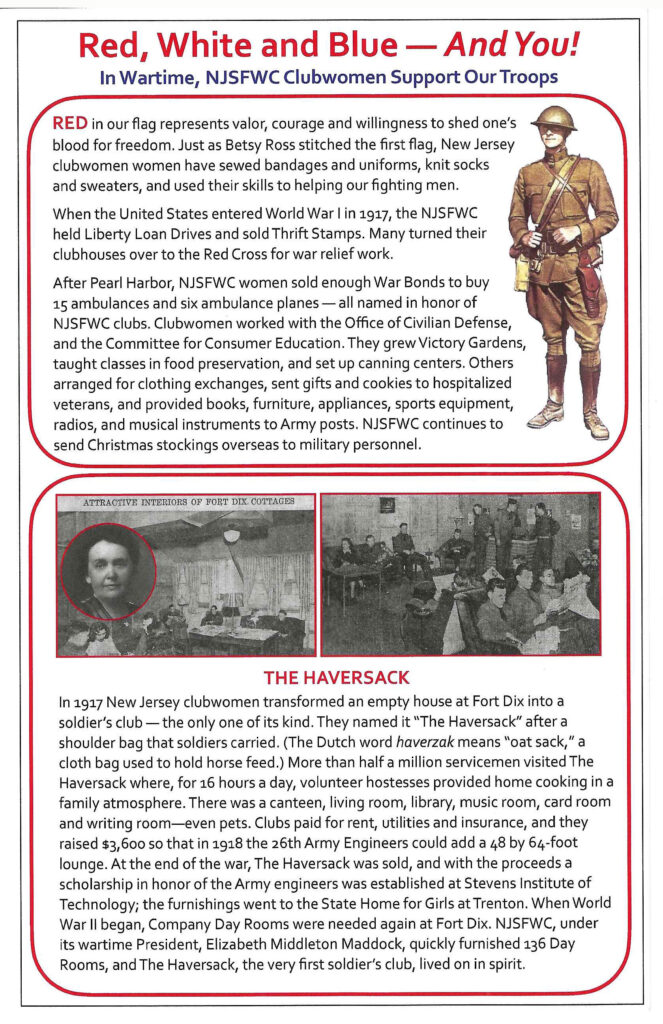
New Jersey clubwomen created the first soldier’s club.
On Performing Arts Day in 2024, we told how clubwomen support the nation in peace and war.
The History and “The Haversack“
Marjorie Detweiler gave this talk:
We all know that Betsy Ross sewed the first American flag – the red, white and blue. But did you know that the flag was designed by a founding father from New Jersey? He was Francis Hopkinson. He was on the Continental Marine Committee, and he needed a flag for the navy. Francis asked Congress for a quarter-cask of wine to pay him for his work. I don’t know whether he shared it with Betsy.
But Betsy Ross did share something with us – she was among the many women who supported our country. Betsy sewed a flag, and in all our military conflicts, women have sewed bandages and uniforms, knit warm socks and sweaters, and used their skills to helping our fighting men.
The clubwomen of New Jersey always advocated for peace, but they also always supported our troops. They raised money to buy ambulances and ambulance planes. They set up Victory Gardens and taught women how to preserve food. They distributed books, furniture, appliances, sports equipment, radios, and musical instruments to Army posts.
I want to tell you about a special project at an Army post you’ve all heard of – Fort Dix. Twenty-five years before anyone thought of USO clubs, the New Jersey State Federation of Women’s Clubs rented the Newbold Homestead, an empty house at Fort Dix, and transformed it into a soldier’s club. It became known worldwide as the only soldiers’ club of its kind.
The clubwomen called it “The Haversack.” They named it after a small shoulder bag that soldiers carried. (The Dutch word haverzak means “oat sack,” a cloth bag used to carry horse feed.)
The Haversack was open 16 hours a day, and during World War I more than half a million servicemen came to it. It had a living room, a library, a music room, a card room and a writing room—even pets were provided. The most popular room was the canteen, where volunteer hostesses dished up home cooking in a family atmosphere.
New Jersey clubs paid for rent, utilities and insurance. By 1918, they managed to raise $3,600 so that Army engineers could add an expansive 48 by 64-foot lounge.
At the end of the war, The Haversack was sold. The money was used to set up an engineering scholarship at Stevens Institute of Technology. All the furnishings went to the State Home for Girls at Trenton.
When World War II began, Company Day Rooms were needed again at Fort Dix. The New Jersey State Federation of Women’s Clubs under its wartime President, Elizabeth Middleton Maddock, furnished 136 Day Rooms in only six months — and the spirit of The Haversack, the very first soldier’s club, lived on.
